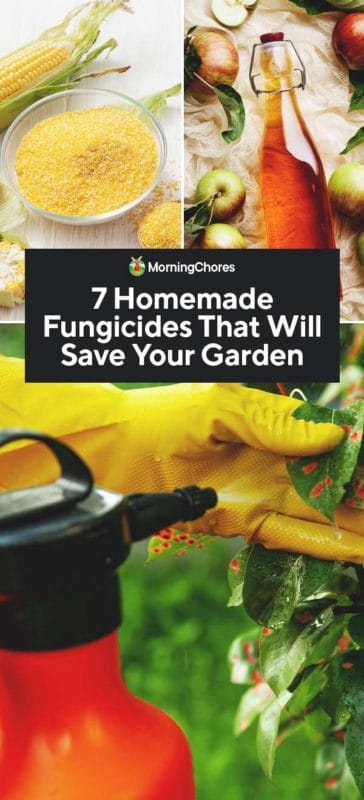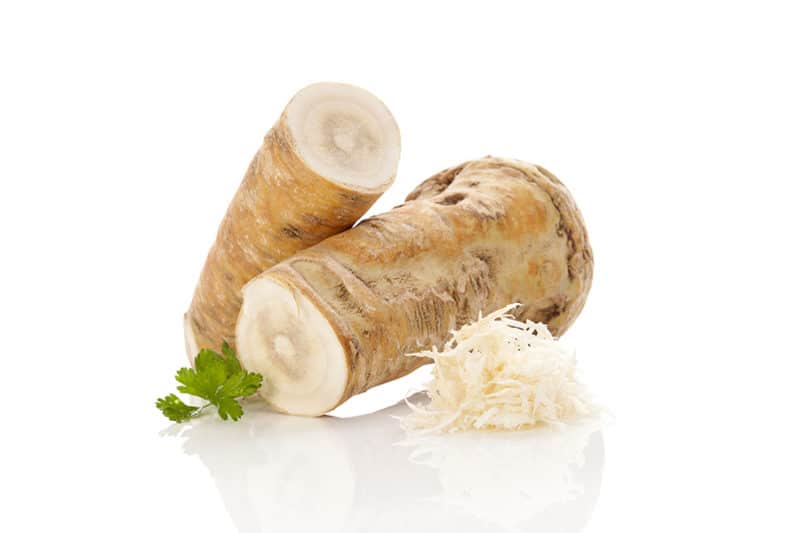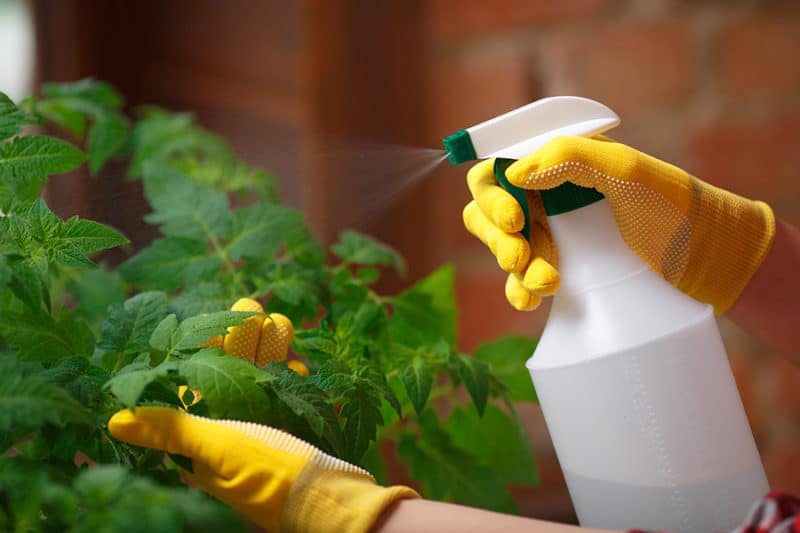How To Identify A Melon Growing In Your Garden
If you're like me, you hate losing your precious plants to fungal infections, but you don't want to use harsh chemicals around the foods you're growing. If that's the case, homemade fungicide sprays could be the solution you're looking for.
Store-bought fungicides can be horribly expensive and many contain chemicals that aren't good for your health or the environment. Even some organic sprays contain harsh chemicals.
Effective and safe fungicide treatments are easy to make at home and can save you a lot of money. You don't need any special ingredients. In fact, you probably have all you need in your cupboard right now.
You can use most homemade fungicide sprays on your ornamental plants, veggies, herbs, and perennials, and not only are they better for your health and the planet, but they'll also save your plants from those nasty fungi. Ready to get started?

7 Homemade Fungicides
You can whip up basic homemade fungicides in a few minutes, or you can make more complicated ones with multiple ingredients. I prefer the basic recipes, but sometimes you need to hit a fungicide with the big guns.
1. Powdery Mildew Fighter
Powdery mildew is the bane of all gardeners. It strikes plants like cucumber, squash, melon, zucchini and pumpkin, roses, apples and many more. It's recognizable as a powdery, ashy layer on the leaves of your plants. Not only is it unattractive, but it eventually weakens and kills plants.
This homemade fungicide spray stops powdery mildew in its tracks. It's also suitable for black spot on roses.
Ingredients
- 4 teaspoons of baking soda
- 1 teaspoon of mild soap
- 1 gallon of water
Mix all the ingredients together and pour into a spray bottle. Spray all infected leaves top and bottom, ensuring the liquid is so thick it drips off the leaves. Spray the entire plant, not just infected leaves, because even if you can't see the fungus, it could be hiding.
2. Tomato Fungicide
Tomatoes are one of those plants most of us love to grow, but they're often susceptible to fungal diseases like early blight, late blight, leaf mold, fusarium wilt and more. Here's how to stop the fungi that attack tomato plants.
Ingredients
- 1 bulb of garlic
- 2 tablespoons of canola oil
- 4 hot peppers
- Juice from one lemon
Mix these ingredients together and steep overnight in a bucket. The next day, strain the mixture through a sieve or cheesecloth to remove all the solids.
Add 4 tablespoons of this mixture to a gallon of water in a spray bottle. Spray both top and bottom of leaves when you see the signs of a fungal disease.
3. Apple Cider Vinegar
This simple ingredient has rescued a number of my plants from various fungal diseases over the years, though it does take multiple applications every few days.
Simply add 4 tablespoons of apple cider vinegar to a gallon of water. Spray this mixture early in the day so the acid and sun don't burn the foliage.
This spray is good for scab, black spot, leaf spot, and mildew, and is suitable to use every few weeks as a preventative spray.
4. Horseradish

I've planted horseradish to use as a fungicide because it's so potent. Combine:
- 1 cup of horseradish
- 16 ounces of water
Soak overnight. In the morning strain the mixture and add it to 2 quarts of water. Spray this liberally over your plants.
Be super careful to avoid getting this in your eyes.
5. Cornmeal
This is another simple homemade fungicide. I've had good success with this spray on fruit trees, roses, and zucchinis. Combine:
- 1 cup of cornmeal
- 5 gallons of water
After 24 hours, strain and spray directly on the leaves of your plants.
6. Aspirin

This wonder drug that has helped people for centuries is also a wonder in the garden. I've seen many ratios of this fungicide spray, but through trial and error, I've found this recipe gives me the best result.
- 1 aspirin
- 4 cups of water
Crush the aspirin into a powder and add it to the water. Spray liberally on your plants every couple of weeks throughout the growing season. This is a good mixture to spray every two weeks or so as a preventative, as well.
7. Painted Daisies
Pyrethrin comes from the dried leaves of the painted daisy. It's an easy plant to grow and is quite a potent fungicidal spray. Simply dry a few handfuls of flowers and grind to a powder. Soak for 24 hours in 4 gallons of water.
Strain through cheesecloth and spray on plants as both a preventative and cure for fungicide issues on any plant.
Using Your Homemade Fungicides

Before covering your whole plant with your homemade mixture, spray a little on a few leaves to see if there are any adverse effects. Although natural, some of the mixtures are quite potent.
You might want to spray early on in the season before you need to respond to any fungicide issues, because once fungicides appear, it can be more difficult to deal with them.
I have a couple of favorite homemade fungicides that I use as preventative sprays, rather than waiting for an infection to strike. Natural sprays are perfectly fine to use as a preventative measure every couple of weeks or so because there are no harsh chemicals.
Remember to use safe, natural ingredients and don't be afraid to experiment. I've lost many plants to fungal disease and like all gardeners, will continue to do so. While you can never stop fungus altogether, you can limit the damage and save as many plants as possible, but you need to do some playing around to find out what works best for your plants.
Prevention
Of course, prevention is better than trying to deal with a fungicide infection. Here are some growing tips to help you avoid the problem in the first place:
- Ensure you allow plenty of space between plants to provide sufficient airflow.
- Water plants well especially in the peak of summer.
- Feed your soil before planting and feed plants throughout the season to ensure they're strong and more resistant to disease
- Remove any foliage or plants that show signs of fungicide damage. Don't put them in the compost heap and don't allow infected foliage to decompose in the soil.
- If you like a particular homemade fungicide recipe, use it as a preventative and spray every two weeks.
We'd love to hear from you if you have any other ideas for ingredients for homemade fungicide treatments, especially if they are simple, cheap and effective.
Was this article helpful?
Yes No
How To Identify A Melon Growing In Your Garden
Source: https://morningchores.com/homemade-fungicides/
Posted by: vitelafaidn1989.blogspot.com

0 Response to "How To Identify A Melon Growing In Your Garden"
Post a Comment